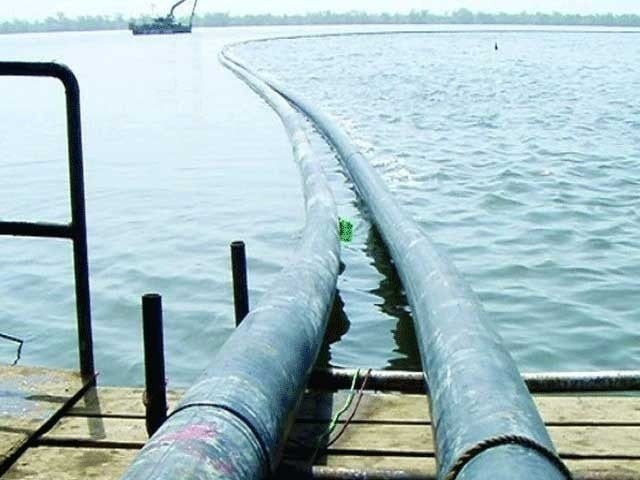Sindh, Punjab water share cut by 5%
Move comes amid falling water levels in reservoirs

The water levels in the reservoirs have started falling again, compelling the Indus River System Authority (Irsa) to reduce the share of Sindh and Punjab by 5%.
Sindh's share has been reduced from 149,000 cusecs to 130,000 cusecs.
Punjab’s water supply has been cut from 125,000 cusecs to 106,000 cusecs.
The shortfall is likely to increase in the coming days if the inflow of water does not increase.
A spokesperson for the Water and Power Development Authority (WAPDA) said the inflow of water in Tarbela Dam was 110,400 cusecs and the outflow 131,700 cusecs.
Read: Irsa reverses decision, raises Sindh, Punjab’s share
Similarly, the inflow at Mangla Dam was 39,400 cusecs and it had an outflow of 49,000 cusecs.
The water inflow in Chashma Barrage was 179,500 cusecs and the outflow was 175,000 cusecs.
The inflow in Chenab River at Head Marala was 31,300 cusecs and the outflow was 5,000 cusecs.
The inflow in Kabul River in Nowshera was 42,000 cusecs while the outflow was recorded at 42,000 cusecs.
The water storage in Tarbela was 700,500 acre feet on Monday while the water storage in Mangla on Tuesday stood at 1.9 million acre feet.
The Pakistan Meteorological Department (PMD) had recently warned that drought-like conditions prevailing in parts of Sindh and Balochistan might exacerbate.
The caveat has been issued in light of overall below than average rainfall recorded in the country from October last year to May 21.
“The country received 36.1% less rainfall than usual,” it read, adding that Sindh recorded 64.5% less rainfall than usual, while Balochistan saw 59.5% below usual rainfall.
Kashmir received 37.7% less rainfall, while Khyber-Pakhtunkhwa and Punjab received 20.4% less rainfall.
The rainy season in west to south-west districts of Balochistan is over now and no significant rainfall is expected until November, the statement read, declaring that due to consistent deficiency of rainfall moderate drought has further intensified into severe drought, especially in the south-western Balochistan and south-eastern Sindh.
Read more: Sindh questions impartiality of IRSA teams
“Drought conditions may further affect the agriculture and livestocks. So, It is advised that all stakeholders take pre-emptive measures for disaster prone districts,” the PMD cautioned.
The moderate drought is likely to occur in different areas of Balochistan such as Chaghi, Gwadar, Harnai, Ketch, Kharan, Mastung, Noshki, Panjgur, Kalat, Quetta, and Washik.
The water crisis in Pakistan is fast becoming a forecast for more prolonged spells of droughts in future in several parts of the country.
Reduced water supply to Sindh from Indus River has worsened the water woes for the lower riparian province. The depletion of snowfall on the mountains has led to severe scarcity of underground water in Balochistan.



















COMMENTS
Comments are moderated and generally will be posted if they are on-topic and not abusive.
For more information, please see our Comments FAQ